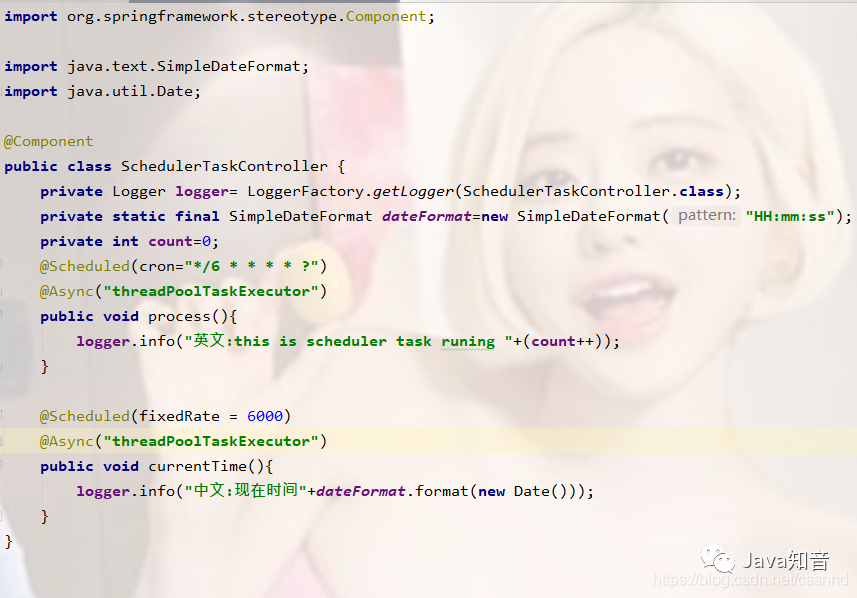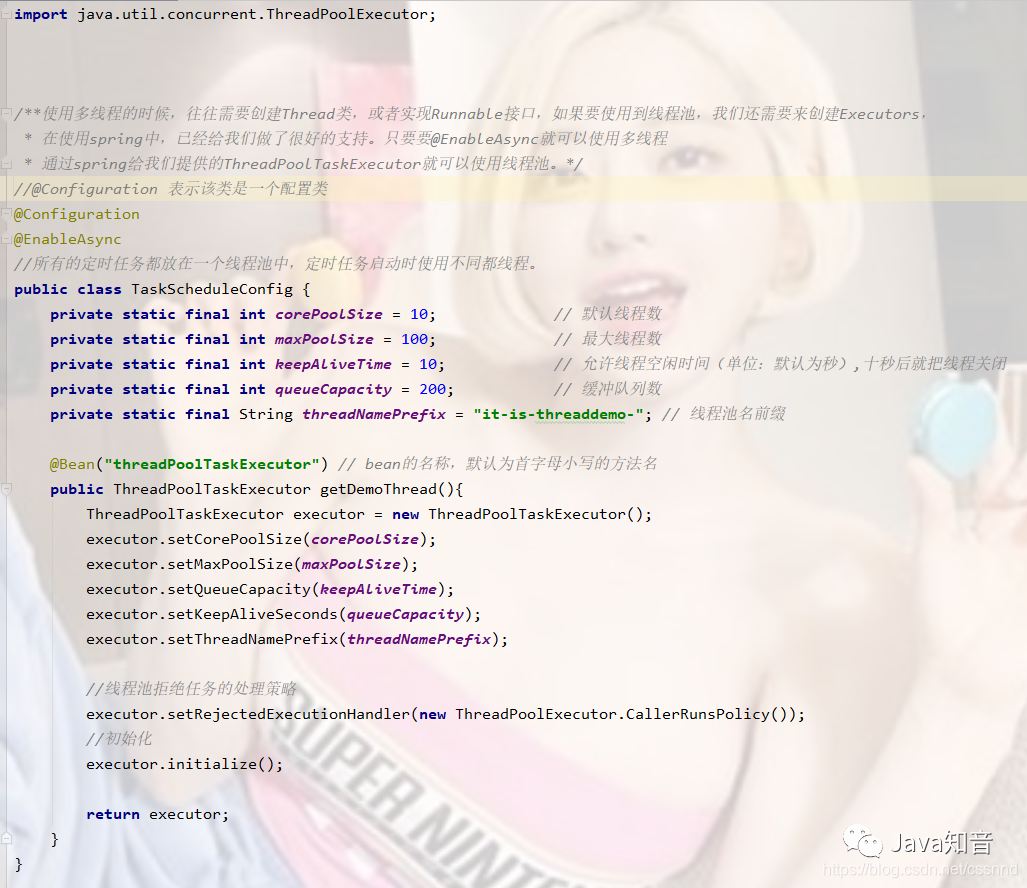来自:blog.csdn.net/cssnnd/article/details/108328942
战shu分析:

使用场景 :
总的来说,实际开发中定时器需要解决多个定时器同时并发的问题,也要解决定时器之间的冲突问题
问题场景重现 :


添加注解

import org.slf4j.Logger;
import org.slf4j.LoggerFactory;
import org.springframework.scheduling.annotation.Async;
import org.springframework.scheduling.annotation.Scheduled;
import org.springframework.stereotype.Component;
import java.text.SimpleDateFormat;
import java.util.Date;
@Component
public class SchedulerTaskController {
private Logger logger= LoggerFactory.getLogger(SchedulerTaskController.class);
private static final SimpleDateFormat dateFormat=new SimpleDateFormat("HH:mm:ss");
private int count=;
@Scheduled(cron="*/6 * * * * ?")
@Async("threadPoolTaskExecutor")
public void process(){
logger.info("英文:this is scheduler task runing "+(count++));
}
@Scheduled(fixedRate = 6000)
@Async("threadPoolTaskExecutor")
public void currentTime(){
logger.info("中文:现在时间"+dateFormat.format(new Date()));
}
}

import org.springframework.context.annotation.Bean;
import org.springframework.context.annotation.Configuration;
import org.springframework.scheduling.annotation.EnableAsync;
import org.springframework.scheduling.concurrent.ThreadPoolTaskExecutor;
import java.util.concurrent.ThreadPoolExecutor;
/**使用多线程的时候,往往需要创建Thread类,或者实现Runnable接口,如果要使用到线程池,我们还需要来创建Executors,
* 在使用spring中,已经给我们做了很好的支持。只要要@EnableAsync就可以使用多线程
* 通过spring给我们提供的ThreadPoolTaskExecutor就可以使用线程池。*/
//@Configuration 表示该类是一个配置类
@Configuration
@EnableAsync
//所有的定时任务都放在一个线程池中,定时任务启动时使用不同都线程。
public class TaskScheduleConfig {
private static final int corePoolSize = 10; // 默认线程数
private static final int maxPoolSize = 100; // 大线程数
private static final int keepAliveTime = 10; // 允许线程空闲时间(单位:默认为秒),十秒后就把线程关闭
private static final int queueCapacity = 200; // 缓冲队列数
private static final String threadNamePrefix = "it-is-threaddemo-"; // 线程池名前缀
@Bean("threadPoolTaskExecutor") // bean的名称,默认为首字母小写的方法名
public ThreadPoolTaskExecutor getDemoThread(){
ThreadPoolTaskExecutor executor = new ThreadPoolTaskExecutor();
executor.setCorePoolSize(corePoolSize);
executor.setMaxPoolSize(maxPoolSize);
executor.setQueueCapacity(keepAliveTime);
executor.setKeepAliveSeconds(queueCapacity);
executor.setThreadNamePrefix(threadNamePrefix);
//线程池拒绝任务的处理策略
executor.setRejectedExecutionHandler(new ThreadPoolExecutor.CallerRunsPolicy());
//初始化
executor.initialize();
return executor;
}
}


